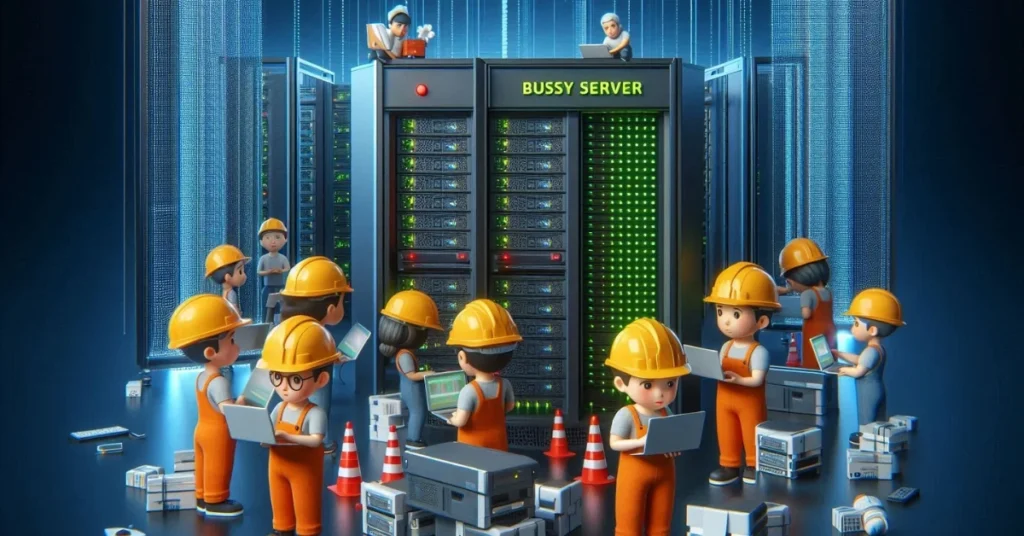
If you’re a regular user of Navisworks, you’ve likely encountered the dreaded “Server Busy” error. Whether you’re working with large files, complex models, or collaborating with others on a shared server, this issue can significantly disrupt your workflow. Fortunately, there are solutions available that can help you resolve this frustrating error and keep your projects on track.
The “Navisworks Server Busy” error is a common issue faced by users working with large files or network-based workflows in Autodesk Navisworks. This error typically occurs due to network congestion, license validation problems, or outdated graphics drivers, causing delays or freezing the program. By following troubleshooting steps such as checking your network connection, updating drivers, and optimizing hardware settings, you can effectively resolve this issue. Managing file sizes and ensuring compatibility with plug-ins like Rhino can further enhance performance, allowing you to avoid disruptions and work efficiently on your projects.
What Is Navisworks?
Navisworks, a product by Autodesk, is a powerful project review software used for architecture, engineering, and construction (AEC) professionals. It allows you to integrate 3D models and data from various design tools like Revit, AutoCAD, and Rhino into a single coordinated model.
Understanding the “Server Busy” Error
The “Server Busy” error in Navisworks generally appears when the program is trying to communicate with a server or external resource and is unable to complete the process. This can occur when loading large files or during resource-heavy operations such as rendering. The message typically includes a “Retry” button, but users often find that retrying leads to an endless loop, leaving the program unresponsive.
Common Causes of the “Server Busy” Problem
Here are a few reasons why you might be facing the “Server Busy” issue:
- Network Congestion: High traffic on the network or server-side delays.
- License Problems: Issues with your Autodesk or Cloud Zoo license can cause delays in accessing the software.
- Hardware Limitations: If your system doesn’t meet the minimum hardware requirements, it may struggle with large files or advanced rendering tasks.
- Outdated Drivers: An outdated graphics driver or an issue with your graphics device can lead to this error.
Troubleshooting Steps for the “Server Busy” Issue
Checking Network and Server Connection
First and foremost, ensure that your network is functioning correctly. A spotty or slow internet connection can cause Navisworks to experience delays when accessing files or licenses from the server. You might want to ping your server or check for any proxy server issues that could be slowing down communication.
Managing Files and Network Usage
Large files can be the culprit behind server overloads, especially when several users are accessing them at once. Consider breaking down your models into smaller chunks or using file management best practices, such as utilizing file compression or using external references (xref) to reduce the load.
Updating Graphics Drivers
Your graphics device and the drivers associated with it play a critical role in how smoothly Navisworks runs. If you’re using an NVIDIA graphics card, make sure you have the latest driver installed. The “Nvidia driver date” should match the latest supported version listed on the Autodesk website. Upgrading to a newer driver could eliminate the “busy error” linked to rendering tasks.
Checking License Status
Make sure your license for Autodesk Navisworks is active and properly connected to the Cloud Zoo. Issues with logging into Autodesk or expired licenses can cause a “Server Busy” notification, especially if the program is attempting to validate your license type during use.
How Navisworks Interacts with Rhino and Other Programs
Navisworks is often used in conjunction with Rhino, Revit, and other design programs. When Rhino files are linked in Navisworks, rendering processes can sometimes slow down due to the file size or plug-ins associated with Rhino render. Double-check that the files\rhino are optimized and that you’re using the most efficient render settings.
Importance of Optimizing Hardware and Settings
It’s crucial to ensure that your hardware meets the necessary specifications for running Navisworks. Autodesk recommends specific hardware configurations, and exceeding these minimums can drastically improve performance.
Managing Memory and Video RAM
Navisworks can be particularly taxing on your system’s RAM and video memory. Ensuring that your machine has sufficient physical RAM (at least 16 GB, but more for large projects) and video memory is key. Pay close attention to your GPU settings, including mip map filtering and linear anisotropic filtering, which can help improve performance in graphics-intensive tasks.
Optimizing OpenGL and Display Settings
Navisworks relies on OpenGL for rendering, and tweaking OpenGL settings like the z-buffer depth and viewport size can significantly improve performance. In particular, OpenGL ver compatibility with your graphics device should be checked regularly. Hardware modes such as anti-aliasing and mipmapping also need proper configuration to ensure smooth rendering.
Tips for Managing Large Files in Navisworks
Large files can cause slowdowns and lead to server errors. It’s a good idea to reduce the file size wherever possible—break models into smaller sections, use references and avoid loading unnecessary objects into the project.
Navisworks Manage vs Navisworks Simulate: Which Is Better for Large Projects?
Navisworks Manage offers more comprehensive features for large, complex projects than Navisworks Simulate. Manage includes advanced clash detection, which can be resource-intensive, so it’s better suited for projects that involve significant collaboration or require precise coordination.
Using Safe Mode and Hardware Modes for Troubleshooting
If the problem persists, you can try running Navisworks in Safe Mode to isolate the issue. Safe Mode disables some of the more advanced rendering features like raytraced graphics, which could be causing the slowdown. Also, switching to hardware modes like parallel loops can help you identify if the issue is related to a specific hardware component.
How Autodesk Updates Can Resolve Common Issues
Autodesk regularly releases updates and hotfixes that can address bugs or performance issues in Navisworks. Always make sure that you’re running the latest version of the software, as these updates can fix known problems like the “Server Busy” error.
Resolving Issues with Rhino Render and Other Plug-ins
If you’re using Rhino plugins or rendering Rhino models in Navisworks, you might encounter additional errors. Ensure your Rhino plug-ins are up to date and compatible with the version of Navisworks you’re running. In some cases, adjusting the adapter port and anti-alias mode in Rhino can help resolve graphical issues.
Configuring Your Computer for Optimal Performance
Managing Memory and Video RAM
To run Navisworks efficiently, your computer needs ample physical RAM, preferably 16 GB or more. Video memory is also crucial, particularly if you’re working with high-resolution textures or complex 3D models.
Optimizing OpenGL and Display Settings
OpenGL settings like mip map filtering, anisotropic filtering, and z-buffer depth can be configured to maximize performance. Adjusting the maximum texture size and using hardware-accelerated modes will help Navisworks render large scenes more smoothly.
Best Practices for Network and Cloud-Based Workflows
When working on large projects that involve a team, using cloud-based tools like the Autodesk Cloud or Git can make collaboration smoother. Ensure that all users have proper access and that file-syncing processes are optimized for network efficiency.
Common Navisworks Error Codes and How to Fix Them
Here are some common error codes that could accompany the “Server Busy” issue:
- Error Code 1071: Typically related to network congestion.
- Error Code 3016: This might indicate a license problem with Autodesk.
- Error Code 2501: This is often linked to file corruption or unsupported file formats.
Conclusion
Dealing with the “Navisworks Server Busy” error can be frustrating, but with the right troubleshooting steps, you can minimize disruptions and keep your workflow smooth. From checking network connections to updating drivers and managing large files, addressing the core causes of the issue is key. Optimizing your hardware, ensuring your Autodesk license is active, and staying up to date with software updates will help prevent future occurrences. By taking these proactive measures, you’ll be able to work efficiently on your Navisworks projects without unnecessary downtime.
FAQs:
Why do I keep getting the “Server Busy” message in Navisworks?
This error usually occurs when the program is unable to communicate with the server due to network issues, license validation delays, or file size limitations.
Can updating my graphics driver fix the “Server Busy” error?
Yes, an outdated or incompatible graphics driver can cause performance issues. Make sure you’re using the latest driver from NVIDIA or your GPU manufacturer.
How can I prevent large files from causing errors in Navisworks?
Break down large files into smaller sections, use external references, and reduce unnecessary complexity in your models to prevent slowdowns and server issues.
How do I update my Rhino plug-ins for use with Navisworks?
Check for updates on the Rhino website or through your plugin manager. Ensuring compatibility with the latest version of Navisworks can resolve many issues.
Does using Safe Mode in Navisworks affect my project?
Safe Mode disables some advanced rendering features, but it won’t affect your project data. It’s a useful troubleshooting step to isolate hardware-related problems.

